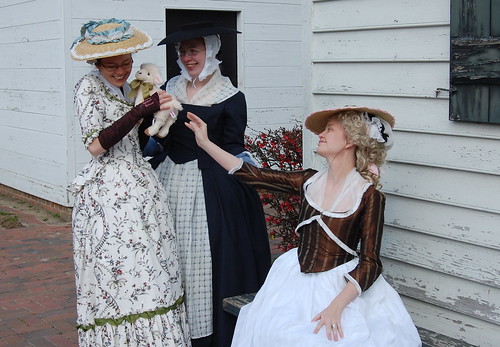
During the 1780s, jackets with cutaway fronts, known modernly as zone fronts (not a period term!), were popular. Cutaway fronts could be contrasting or matching and are seen on both dresses and jackets. They were a fashionable option--you wouldn't want this on your work dress--and an easy to do variation on a standard bodice.
I'll be showing construction for my brown and gold jacket, though the basic construction would be the same for a dress.
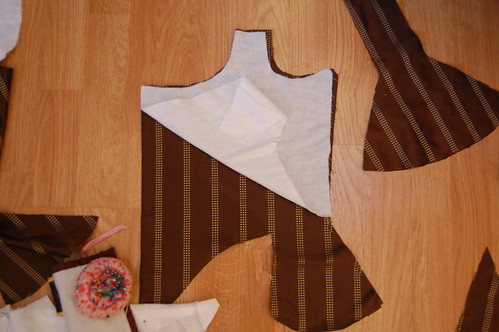
First, cut out your pattern. This is my standard separate back gown pattern, with tails added. To figure out the shape of your front overlay, lay your pattern piece over your front piece, and fold it up. (Please note that I cut the tail off the front piece.)
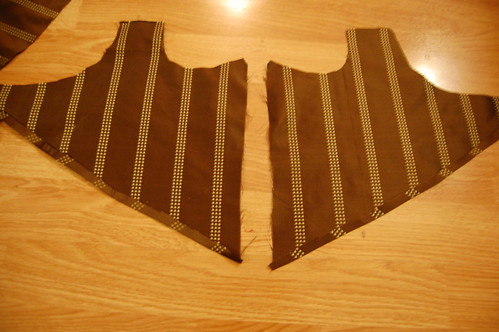
Cut two overlays, adding seam allowance to the neck and bottom edges. Press the bottom edge up and hem. (I forgot to add a neck seam allowance, which made hemming very tricky later on!)
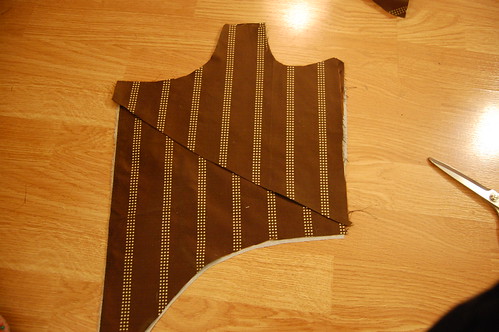
Lay the overlay on the front silk bodice piece and front bodice lining, wrong side to right side. The overlay is unlined.

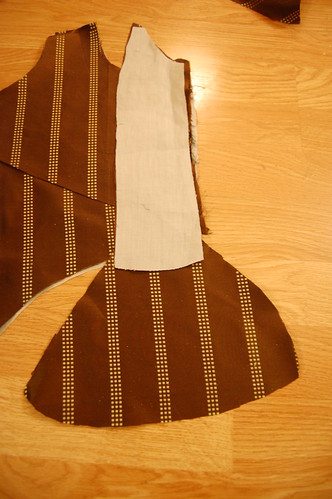
Lay the silk bodice side back piece on the front, right sides together, and pin the seam. Then place the lining, which ends at the waist, on the side back. Leave the lining loose at the front.
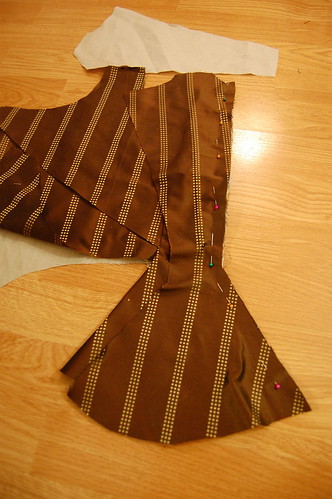
Now, pin the silk center back piece to the side back piece, both silk and lining.
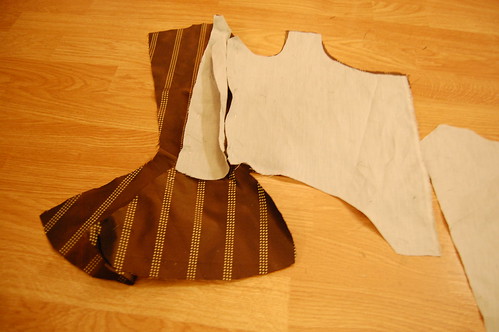
Here's what it looks like from the wrong side. Continue pinning pieces together in this manner. One of the back pieces will be left without an lining piece if you have an even number of pieces like I do in this bodice.
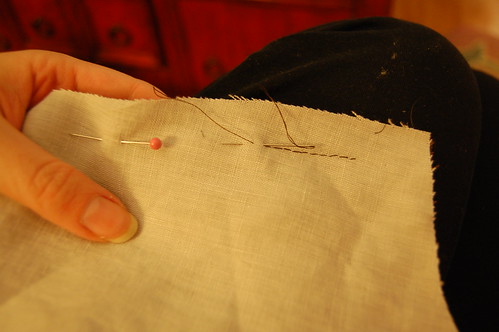

Now, sew the seams. Sew through one layer of linen lining, and two layers of silk, as pinned. For the bottom inch or so of the seam, and the first inch of the center back seam that intersects the neckline, move the lining out of the way and sew just the silk. This is necessary for edge finishing.
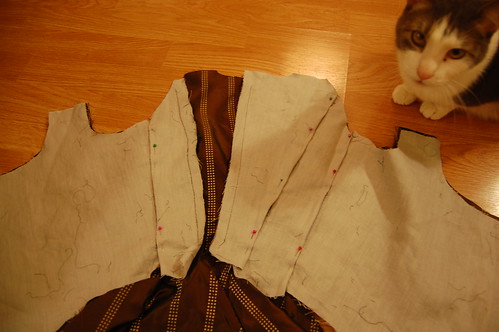
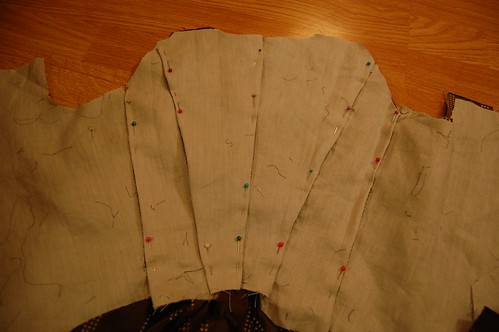
When all pieces are sewn, smooth the lining, fold the seam allowances under, and pin them to the seams. For the unlined piece, fold both seam allowances down and pin into place.

Whipstitch the lining into place, once again, for the bottom inch and top of the center back, make sure not to catch the silk.
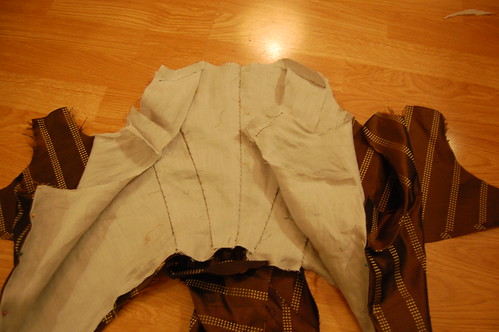
Here's what everything looks like at this point. Notice that the edges are loose.
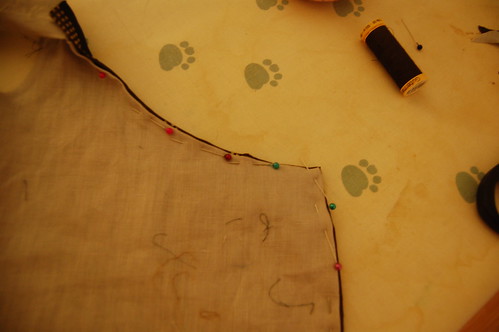
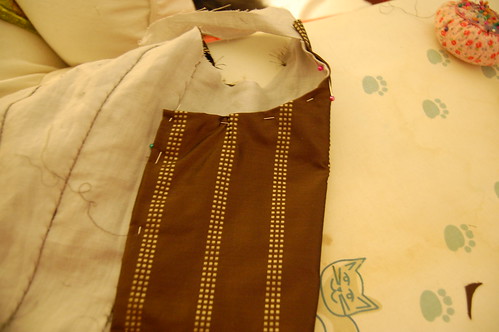
Now, fold the edges of the front piece silk and lining in towards each other and pin.
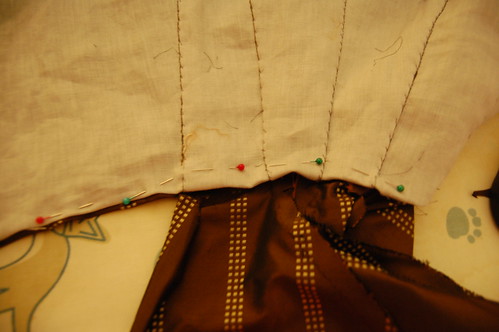
Continue folding the lining under across the bottom back of the bodice. Then hem the lining and silk together, using point a rabbatre sous la main, a running stitch, or a whipstitch. For the part of the lining over the tails, don't attach the linen to the silk. It lies better loose.
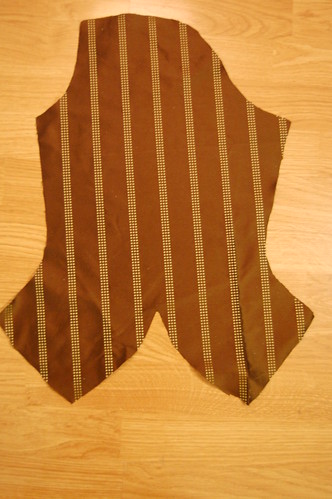
And here we have a sleeve! This is a fairly typical sleeve shape for a late 18th century sleeve.
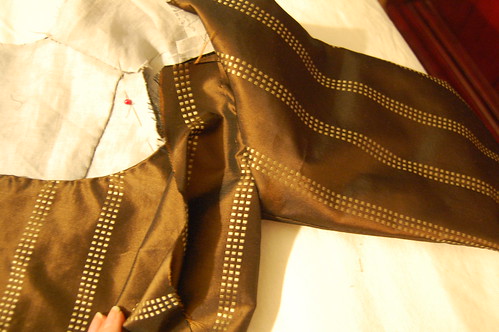
Here's the bottom half of the sleeve set in. I set the sleeves mostly in the way I described here.
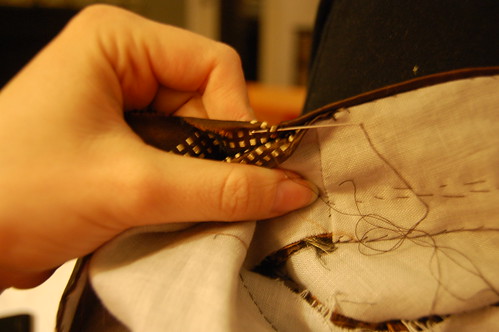
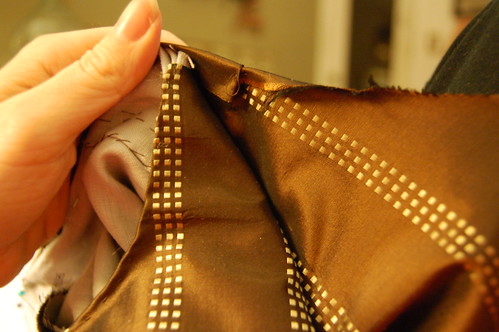
When I sewed the silk shoulder strap on, I just sewed the bottom edge to the cutaway front, and then I hemmed the shoulder strap and cutaway front together, as can be seen in the second picture.
And that's it! Except for trim, of course. The cutaway fronts are simply pinned into place once the bodice fronts are pinned shut.

This is so great!
ReplyDeleteGreat job on your jacket! I'd love to make one of these, or a whole zone front gown, but the design is really too late for most of my 18th century portrayals. I fear I would never get to wear it.
ReplyDelete-Emily
Emily's Vintage Visions
I've never seen sleeves like that before. Do you have much movement? Did you draft the sleeves or use an existing pattern?
ReplyDeletethanks for how to make amazing design.....
ReplyDelete